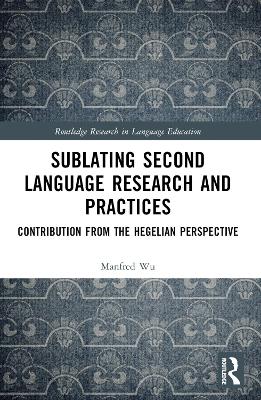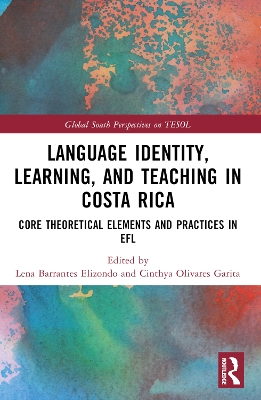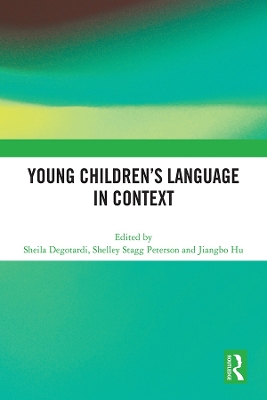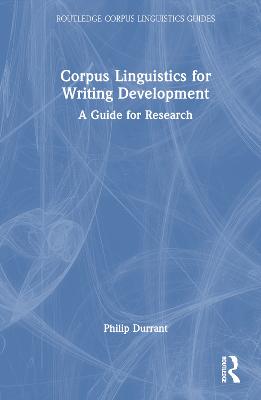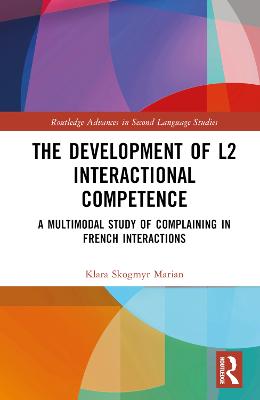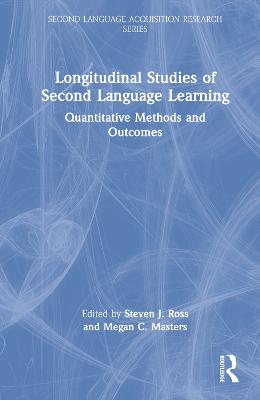Corpus Linguistics for Writing Development
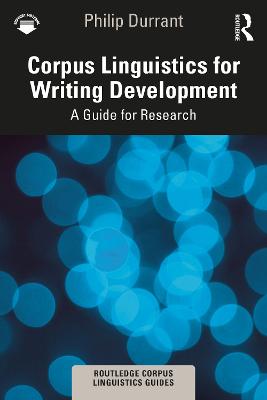 portes grátis
portes grátis
Corpus Linguistics for Writing Development
A Guide for Research
Durrant, Philip
Taylor & Francis Ltd
11/2022
184
Mole
Inglês
9780367715786
15 a 20 dias
358
Descrição não disponível.
Table of Contents
Part One: Foundations
Chapter 1. Studying Writing Development with a Corpus
1. Introduction
2. Using a corpus to study writing development
3. How does writing development relate to vocabulary, grammar, formulaic language?
4. Outline of the book
Chapter 2. Learner Corpus Analysis in Practice: Some Basics
1. Introduction
2. Some housekeeping: getting your computer ready
3. Getting to know R and RStudio
3.1 Introduction: why learn R?
3.2 Entering commands: the Console and Scripts
3.3 Functions
3.4 Vectors
3.5 Getting help
4. Some fundamentals of corpus research: encoding, markup, annotation, and metadata
5. Corpora used in this book
6. Automatically annotating your corpus for part of speech and syntactic relationships
6.1 Introduction
6.2 Make sure you have the required software
6.3 Prepare the corpus for parsing
6.4 Make a list of the files you want to process
6.5 Run the CoreNLP pipeline
7. Conclusion
Part Two: Studying Vocabulary in Writing Development
Chapter 3. Understanding Vocabulary in Learner Writing
1. Introduction
2. Theorizing development in vocabulary
2.1 Introduction
2.2 Breadth, depth, and fluency
2.3 Aspects of word knowledge
3. Measures of vocabulary development
3.1 Introduction
3.2 Lexical diversity
3.3 Lexical sophistication
3.3.1 Word length
3.3.2 Word frequency
3.3.3 Register-based measures
3.3.4. Contextual distinctiveness
3.3.5 Semantic measures
3.3.6 Psycholinguistic measures
4. Complicating factors
4.1 Introduction
4.2 What is a 'word'?
4.2.1 Defining words
4.2.2 Defining word tokens
4.2.3 Defining word types
4.3 Choosing a suitable reference corpus
4.4 Relationships between measures of diversity and sophistication
4.5 Vocabulary knowledge depth
5. Conclusion
6. Taking it further
Chapter 4. Vocabulary Research in Practice: Diversity and Academic Vocabulary
1. Introduction
2. Measuring vocabulary diversity
2.1 Getting the metadata and corpus filenames
2.2: Generating CTTR scores
2.3 Recording the results
2.4 Analysing vocabulary diversity
3. Studying academic vocabulary
3.1 Preparing the list of academic vocabulary
3.2 Converting the parsed corpus to an easier-to-use format
3.3 Identifying AVL words in the learner corpus
3.4 Visualizing variation in measures
3.5 Investigating the patterns
4. Conclusion
Part Three: Studying Grammar in Writing Development
Chapter 5. Understanding Grammar in Learner Writing
1. Introduction
2. Studying development through grammar
2.1 Models of grammar
2.2 Selecting and interpreting grammatical features
3. Approaches to grammatical development
3.1 Varieties of grammatical approaches
3.2 Development in grammatical complexity
3.3 Multi-dimensional analysis
3.4 Usage-based models of development
4. Conclusion
5. Taking it further
Chapter 6. Grammar Research in Practice: Evaluating Parser Accuracy
1. Introduction
2. Reading a parsed corpus
3. Accuracy evaluation and fixtagging: an introduction
4. Accuracy evaluation and fixtagging: a worked example
4.1 Hand-annotating a sample of texts
4.2 Getting metadata and filenames
4.3 Identifying and counting adjectives
4.4 Identifying true positives, false positives, and false negatives
4.5 Calculating precision and recall
4.6 Identifying matches and differences in hand vs. computer parses
4.7 Identifying and fixing parsing errors
5. Tracing development in a grammatical feature
5.1 Counting a feature in texts
5.2 Visualizing variation across learner groups
6. Conclusion
Part Four: Studying Formulaic Language in Writing Development
Chapter 7. Understanding Formulaic Language in Learner Writing
1. Introduction
2. Defining formulaic language
3. How can we study formulaic language in a corpus?
3.1 A frequency-based approach to studying formulaic language
3.2 Lexical bundles
3.3 Collocations
4. Conclusion
5. Taking it further
Chapter 8. Formulaic Language Research in Practice: Academic Collocations
1. Introduction
2. Identifying collocations in a reference corpus
2.1 Editing the parsed corpus
2.2 Identifying lemmas and verb + noun combinations
2.3 Identifying collocations
3. Quantifying the use of academic collocations across learner groups
3.1 Preparing the learner corpus
3.2 Identifying academic collocations in the learner corpus
3.3 Understanding use of academic collocations across levels
4. Conclusion
Part One: Foundations
Chapter 1. Studying Writing Development with a Corpus
1. Introduction
2. Using a corpus to study writing development
3. How does writing development relate to vocabulary, grammar, formulaic language?
4. Outline of the book
Chapter 2. Learner Corpus Analysis in Practice: Some Basics
1. Introduction
2. Some housekeeping: getting your computer ready
3. Getting to know R and RStudio
3.1 Introduction: why learn R?
3.2 Entering commands: the Console and Scripts
3.3 Functions
3.4 Vectors
3.5 Getting help
4. Some fundamentals of corpus research: encoding, markup, annotation, and metadata
5. Corpora used in this book
6. Automatically annotating your corpus for part of speech and syntactic relationships
6.1 Introduction
6.2 Make sure you have the required software
6.3 Prepare the corpus for parsing
6.4 Make a list of the files you want to process
6.5 Run the CoreNLP pipeline
7. Conclusion
Part Two: Studying Vocabulary in Writing Development
Chapter 3. Understanding Vocabulary in Learner Writing
1. Introduction
2. Theorizing development in vocabulary
2.1 Introduction
2.2 Breadth, depth, and fluency
2.3 Aspects of word knowledge
3. Measures of vocabulary development
3.1 Introduction
3.2 Lexical diversity
3.3 Lexical sophistication
3.3.1 Word length
3.3.2 Word frequency
3.3.3 Register-based measures
3.3.4. Contextual distinctiveness
3.3.5 Semantic measures
3.3.6 Psycholinguistic measures
4. Complicating factors
4.1 Introduction
4.2 What is a 'word'?
4.2.1 Defining words
4.2.2 Defining word tokens
4.2.3 Defining word types
4.3 Choosing a suitable reference corpus
4.4 Relationships between measures of diversity and sophistication
4.5 Vocabulary knowledge depth
5. Conclusion
6. Taking it further
Chapter 4. Vocabulary Research in Practice: Diversity and Academic Vocabulary
1. Introduction
2. Measuring vocabulary diversity
2.1 Getting the metadata and corpus filenames
2.2: Generating CTTR scores
2.3 Recording the results
2.4 Analysing vocabulary diversity
3. Studying academic vocabulary
3.1 Preparing the list of academic vocabulary
3.2 Converting the parsed corpus to an easier-to-use format
3.3 Identifying AVL words in the learner corpus
3.4 Visualizing variation in measures
3.5 Investigating the patterns
4. Conclusion
Part Three: Studying Grammar in Writing Development
Chapter 5. Understanding Grammar in Learner Writing
1. Introduction
2. Studying development through grammar
2.1 Models of grammar
2.2 Selecting and interpreting grammatical features
3. Approaches to grammatical development
3.1 Varieties of grammatical approaches
3.2 Development in grammatical complexity
3.3 Multi-dimensional analysis
3.4 Usage-based models of development
4. Conclusion
5. Taking it further
Chapter 6. Grammar Research in Practice: Evaluating Parser Accuracy
1. Introduction
2. Reading a parsed corpus
3. Accuracy evaluation and fixtagging: an introduction
4. Accuracy evaluation and fixtagging: a worked example
4.1 Hand-annotating a sample of texts
4.2 Getting metadata and filenames
4.3 Identifying and counting adjectives
4.4 Identifying true positives, false positives, and false negatives
4.5 Calculating precision and recall
4.6 Identifying matches and differences in hand vs. computer parses
4.7 Identifying and fixing parsing errors
5. Tracing development in a grammatical feature
5.1 Counting a feature in texts
5.2 Visualizing variation across learner groups
6. Conclusion
Part Four: Studying Formulaic Language in Writing Development
Chapter 7. Understanding Formulaic Language in Learner Writing
1. Introduction
2. Defining formulaic language
3. How can we study formulaic language in a corpus?
3.1 A frequency-based approach to studying formulaic language
3.2 Lexical bundles
3.3 Collocations
4. Conclusion
5. Taking it further
Chapter 8. Formulaic Language Research in Practice: Academic Collocations
1. Introduction
2. Identifying collocations in a reference corpus
2.1 Editing the parsed corpus
2.2 Identifying lemmas and verb + noun combinations
2.3 Identifying collocations
3. Quantifying the use of academic collocations across learner groups
3.1 Preparing the learner corpus
3.2 Identifying academic collocations in the learner corpus
3.3 Understanding use of academic collocations across levels
4. Conclusion
Este título pertence ao(s) assunto(s) indicados(s). Para ver outros títulos clique no assunto desejado.
Academic Collocations;Lexical Sophistication;Learner Corpus;Reference Corpus;Formulaic Language;BAWE Corpus;Stanford CoreNLP;Corpus File;Writing Development;Data Frame;Academic Word List;Corpus Linguistics;Lexical Bundles;Academic Vocabulary;BNC;Association Measures;Lexical Words;POS;File Names;Filenames;GiG Corpus;POS Tag;White Space;Csv File;Low Frequency Words
Table of Contents
Part One: Foundations
Chapter 1. Studying Writing Development with a Corpus
1. Introduction
2. Using a corpus to study writing development
3. How does writing development relate to vocabulary, grammar, formulaic language?
4. Outline of the book
Chapter 2. Learner Corpus Analysis in Practice: Some Basics
1. Introduction
2. Some housekeeping: getting your computer ready
3. Getting to know R and RStudio
3.1 Introduction: why learn R?
3.2 Entering commands: the Console and Scripts
3.3 Functions
3.4 Vectors
3.5 Getting help
4. Some fundamentals of corpus research: encoding, markup, annotation, and metadata
5. Corpora used in this book
6. Automatically annotating your corpus for part of speech and syntactic relationships
6.1 Introduction
6.2 Make sure you have the required software
6.3 Prepare the corpus for parsing
6.4 Make a list of the files you want to process
6.5 Run the CoreNLP pipeline
7. Conclusion
Part Two: Studying Vocabulary in Writing Development
Chapter 3. Understanding Vocabulary in Learner Writing
1. Introduction
2. Theorizing development in vocabulary
2.1 Introduction
2.2 Breadth, depth, and fluency
2.3 Aspects of word knowledge
3. Measures of vocabulary development
3.1 Introduction
3.2 Lexical diversity
3.3 Lexical sophistication
3.3.1 Word length
3.3.2 Word frequency
3.3.3 Register-based measures
3.3.4. Contextual distinctiveness
3.3.5 Semantic measures
3.3.6 Psycholinguistic measures
4. Complicating factors
4.1 Introduction
4.2 What is a 'word'?
4.2.1 Defining words
4.2.2 Defining word tokens
4.2.3 Defining word types
4.3 Choosing a suitable reference corpus
4.4 Relationships between measures of diversity and sophistication
4.5 Vocabulary knowledge depth
5. Conclusion
6. Taking it further
Chapter 4. Vocabulary Research in Practice: Diversity and Academic Vocabulary
1. Introduction
2. Measuring vocabulary diversity
2.1 Getting the metadata and corpus filenames
2.2: Generating CTTR scores
2.3 Recording the results
2.4 Analysing vocabulary diversity
3. Studying academic vocabulary
3.1 Preparing the list of academic vocabulary
3.2 Converting the parsed corpus to an easier-to-use format
3.3 Identifying AVL words in the learner corpus
3.4 Visualizing variation in measures
3.5 Investigating the patterns
4. Conclusion
Part Three: Studying Grammar in Writing Development
Chapter 5. Understanding Grammar in Learner Writing
1. Introduction
2. Studying development through grammar
2.1 Models of grammar
2.2 Selecting and interpreting grammatical features
3. Approaches to grammatical development
3.1 Varieties of grammatical approaches
3.2 Development in grammatical complexity
3.3 Multi-dimensional analysis
3.4 Usage-based models of development
4. Conclusion
5. Taking it further
Chapter 6. Grammar Research in Practice: Evaluating Parser Accuracy
1. Introduction
2. Reading a parsed corpus
3. Accuracy evaluation and fixtagging: an introduction
4. Accuracy evaluation and fixtagging: a worked example
4.1 Hand-annotating a sample of texts
4.2 Getting metadata and filenames
4.3 Identifying and counting adjectives
4.4 Identifying true positives, false positives, and false negatives
4.5 Calculating precision and recall
4.6 Identifying matches and differences in hand vs. computer parses
4.7 Identifying and fixing parsing errors
5. Tracing development in a grammatical feature
5.1 Counting a feature in texts
5.2 Visualizing variation across learner groups
6. Conclusion
Part Four: Studying Formulaic Language in Writing Development
Chapter 7. Understanding Formulaic Language in Learner Writing
1. Introduction
2. Defining formulaic language
3. How can we study formulaic language in a corpus?
3.1 A frequency-based approach to studying formulaic language
3.2 Lexical bundles
3.3 Collocations
4. Conclusion
5. Taking it further
Chapter 8. Formulaic Language Research in Practice: Academic Collocations
1. Introduction
2. Identifying collocations in a reference corpus
2.1 Editing the parsed corpus
2.2 Identifying lemmas and verb + noun combinations
2.3 Identifying collocations
3. Quantifying the use of academic collocations across learner groups
3.1 Preparing the learner corpus
3.2 Identifying academic collocations in the learner corpus
3.3 Understanding use of academic collocations across levels
4. Conclusion
Part One: Foundations
Chapter 1. Studying Writing Development with a Corpus
1. Introduction
2. Using a corpus to study writing development
3. How does writing development relate to vocabulary, grammar, formulaic language?
4. Outline of the book
Chapter 2. Learner Corpus Analysis in Practice: Some Basics
1. Introduction
2. Some housekeeping: getting your computer ready
3. Getting to know R and RStudio
3.1 Introduction: why learn R?
3.2 Entering commands: the Console and Scripts
3.3 Functions
3.4 Vectors
3.5 Getting help
4. Some fundamentals of corpus research: encoding, markup, annotation, and metadata
5. Corpora used in this book
6. Automatically annotating your corpus for part of speech and syntactic relationships
6.1 Introduction
6.2 Make sure you have the required software
6.3 Prepare the corpus for parsing
6.4 Make a list of the files you want to process
6.5 Run the CoreNLP pipeline
7. Conclusion
Part Two: Studying Vocabulary in Writing Development
Chapter 3. Understanding Vocabulary in Learner Writing
1. Introduction
2. Theorizing development in vocabulary
2.1 Introduction
2.2 Breadth, depth, and fluency
2.3 Aspects of word knowledge
3. Measures of vocabulary development
3.1 Introduction
3.2 Lexical diversity
3.3 Lexical sophistication
3.3.1 Word length
3.3.2 Word frequency
3.3.3 Register-based measures
3.3.4. Contextual distinctiveness
3.3.5 Semantic measures
3.3.6 Psycholinguistic measures
4. Complicating factors
4.1 Introduction
4.2 What is a 'word'?
4.2.1 Defining words
4.2.2 Defining word tokens
4.2.3 Defining word types
4.3 Choosing a suitable reference corpus
4.4 Relationships between measures of diversity and sophistication
4.5 Vocabulary knowledge depth
5. Conclusion
6. Taking it further
Chapter 4. Vocabulary Research in Practice: Diversity and Academic Vocabulary
1. Introduction
2. Measuring vocabulary diversity
2.1 Getting the metadata and corpus filenames
2.2: Generating CTTR scores
2.3 Recording the results
2.4 Analysing vocabulary diversity
3. Studying academic vocabulary
3.1 Preparing the list of academic vocabulary
3.2 Converting the parsed corpus to an easier-to-use format
3.3 Identifying AVL words in the learner corpus
3.4 Visualizing variation in measures
3.5 Investigating the patterns
4. Conclusion
Part Three: Studying Grammar in Writing Development
Chapter 5. Understanding Grammar in Learner Writing
1. Introduction
2. Studying development through grammar
2.1 Models of grammar
2.2 Selecting and interpreting grammatical features
3. Approaches to grammatical development
3.1 Varieties of grammatical approaches
3.2 Development in grammatical complexity
3.3 Multi-dimensional analysis
3.4 Usage-based models of development
4. Conclusion
5. Taking it further
Chapter 6. Grammar Research in Practice: Evaluating Parser Accuracy
1. Introduction
2. Reading a parsed corpus
3. Accuracy evaluation and fixtagging: an introduction
4. Accuracy evaluation and fixtagging: a worked example
4.1 Hand-annotating a sample of texts
4.2 Getting metadata and filenames
4.3 Identifying and counting adjectives
4.4 Identifying true positives, false positives, and false negatives
4.5 Calculating precision and recall
4.6 Identifying matches and differences in hand vs. computer parses
4.7 Identifying and fixing parsing errors
5. Tracing development in a grammatical feature
5.1 Counting a feature in texts
5.2 Visualizing variation across learner groups
6. Conclusion
Part Four: Studying Formulaic Language in Writing Development
Chapter 7. Understanding Formulaic Language in Learner Writing
1. Introduction
2. Defining formulaic language
3. How can we study formulaic language in a corpus?
3.1 A frequency-based approach to studying formulaic language
3.2 Lexical bundles
3.3 Collocations
4. Conclusion
5. Taking it further
Chapter 8. Formulaic Language Research in Practice: Academic Collocations
1. Introduction
2. Identifying collocations in a reference corpus
2.1 Editing the parsed corpus
2.2 Identifying lemmas and verb + noun combinations
2.3 Identifying collocations
3. Quantifying the use of academic collocations across learner groups
3.1 Preparing the learner corpus
3.2 Identifying academic collocations in the learner corpus
3.3 Understanding use of academic collocations across levels
4. Conclusion
Este título pertence ao(s) assunto(s) indicados(s). Para ver outros títulos clique no assunto desejado.
Academic Collocations;Lexical Sophistication;Learner Corpus;Reference Corpus;Formulaic Language;BAWE Corpus;Stanford CoreNLP;Corpus File;Writing Development;Data Frame;Academic Word List;Corpus Linguistics;Lexical Bundles;Academic Vocabulary;BNC;Association Measures;Lexical Words;POS;File Names;Filenames;GiG Corpus;POS Tag;White Space;Csv File;Low Frequency Words

